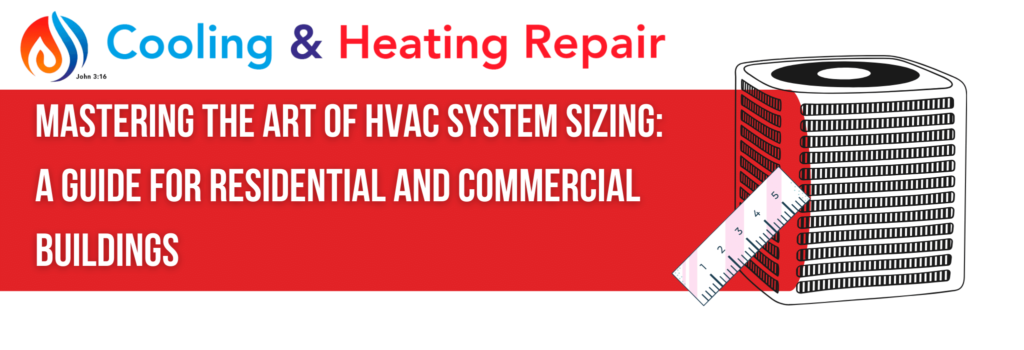Mastering the Art of HVAC System Sizing: A Guide for Residential and Commercial Buildings

In the world of heating, ventilation, and air conditioning (HVAC), one size definitely does not fit all. Properly sizing HVAC systems is a critical step towards achieving optimal comfort, energy efficiency, and cost-effectiveness in both residential and commercial buildings. In this guide, we’ll delve into the principles of HVAC system sizing and unveil the secrets to finding the perfect fit for your space.
Understanding the Unique Needs of Residential and Commercial Spaces
Residential HVAC Sizing:
In residential settings, comfort is key. Sizing an HVAC system for a home involves considering factors such as square footage, insulation levels, local climate, and the number of occupants. The Manual J load calculation, a meticulous process that assesses heat gain and loss, is an indispensable tool. This method ensures that your HVAC system is neither overpowered, leading to excessive energy consumption, nor underpowered, causing discomfort on extreme weather days.
Commercial HVAC Sizing:
Commercial spaces come with their own set of challenges. Factors like occupancy levels, building orientation, and specialized equipment contribute to the complexity. Performing a thorough load analysis, encompassing lighting, appliances, and the unique usage patterns of the space, is vital. A balance must be struck to provide optimal comfort to occupants and ensure the HVAC system operates efficiently.
The Science Behind HVAC Load Calculations
Conducting Manual J Load Calculations:
Manual J is the cornerstone of HVAC sizing. This method accounts for heat gain and loss by considering factors like insulation, windows, doors, and the local climate. Accurate measurements and data collection are crucial to obtaining precise results. Technology plays a key role here, with advanced software simplifying complex calculations and reducing margin for error.
Factoring in Diversity and Sensible Heat Ratios:
Understanding diversity factors is crucial. Not all rooms in a building will experience peak loads simultaneously, and diversity factors help account for this variation. Additionally, considering sensible heat ratios ensures that the system effectively manages temperature without overemphasizing humidity control.
The Role of Energy Efficiency in Sizing HVAC Systems
Embracing Variable Refrigerant Flow (VRF) and Zoning:
Modern HVAC systems offer advanced features like Variable Refrigerant Flow and zoning capabilities. These technologies enhance energy efficiency by allowing precise control over individual zones, ensuring the system only expends energy where needed.
Exploring High-Efficiency Equipment:
Investing in high-efficiency HVAC equipment may have a higher upfront cost, but the long-term energy savings are substantial. Energy Star-rated systems and those adhering to ASHRAE standards guarantee performance excellence and environmental responsibility.
Conclusion:
Proper HVAC sizing is both an art and a science. By understanding the unique requirements of residential and commercial spaces, leveraging precise load calculations, and embracing energy-efficient technologies, you can ensure that your HVAC system is not just a utility but a strategic investment. Partner with professionals who grasp the intricacies of system sizing, and embark on a journey towards a perfectly balanced indoor climate, tailored to your building’s specific needs.


